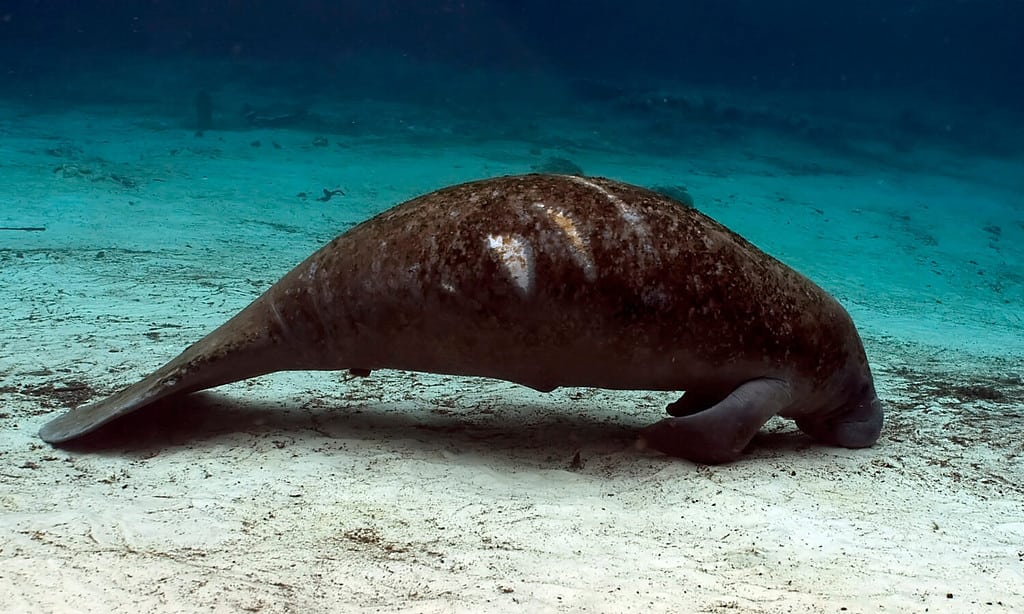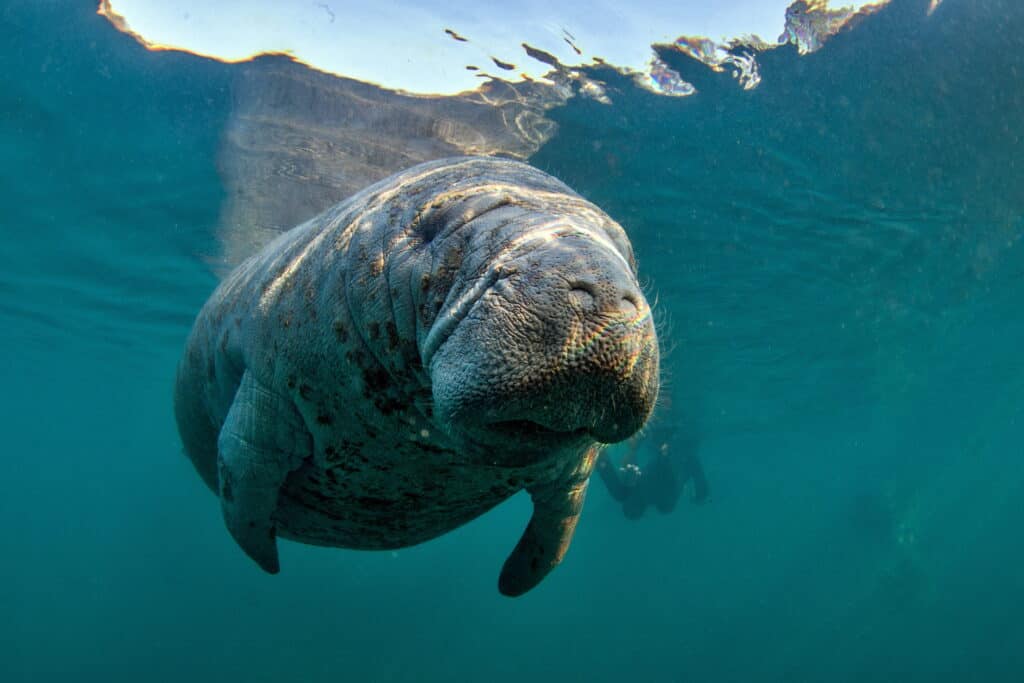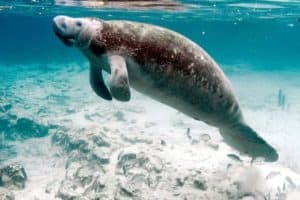If you have been to Sea World or down to Florida, you have likely encountered a gentle oceanic beast. Manatees are unforgettable once you get to see one, whether that’s in person or via photo. These stunning sea creatures are mammals that often have devastating interactions with humans. That may lead to the question of whether manatees are endangered. You can find out the answer below!
What are Manatees?
You may have heard the term sea cows. If so, that is the rather endearing name often used to refer to manatees. The reason behind this unusual name is the sheer size of this aquatic mammal.
On average, they reach 1,200 pounds and 10 feet long at maturity. However, they can reach up to 13 feet long. Those who don’t have a deadly encounter with humans can easily live to 50 or 60 years old!
Manatees do not have any natural predators. They are large enough that even the fiercest sea creatures rarely attack them.
Their large size may also mean that their primary diet comes as a bit of a surprise. Manatees eat loads of seagrass, along with other vegetation. They eat an estimated 4% to 9% of their body weight in greens daily.
There are three species of this aquatic mammal – West Indian (Trichechus manatus), West African (Trichechus senegalensis), and Amazonian (Trichechus inunguis). Each has a different appearance distinguishing them from the others.

Manatees are surprisingly agile in the ocean, despite their size.
©Harry Collins Photography/Shutterstock.com
Are Manatees Endangered?
All three species of manatees are officially designated as threatened by the Endangered Species Act. However, due to a high number of recent deaths, there is pressure to reclassify the beautiful animal as endangered.
Their official designation was endangered until 2017 when they got downgraded. The reason for their significant population decline over the years and prior endangered status has largely to do with their food of choice. Since they mostly eat seagrass, these graceful creatures spend a lot of time in shallow water. And that makes them vulnerable to passing boats. Many manatees collide with the ships themselves. Others inadvertently get tangled in the motors of passing boats. These deadly encounters have led to a shocking decline in the manatee population worldwide.
Other important factors underlying their low numbers are habitat loss, toxins, and entanglement with fishing gear. As with many animals, human encroachment in their areas has led to destruction (whether intended or not). Additionally, red tides bring waves of toxins that manatees are ill-equipped to deal with. They can easily make the large sea creatures sick beyond recovery. And fishing nets are often cast in locations where manatees feed, which can cause entanglement.
How Many Are Left in the World?

Manatees often have tragic encounters with boats or divers. However, sometimes, they do survive to show the scars.
©gary powell/Shutterstock.com
There is some conflicting data about the number of manatees left globally. Most are estimates and best guesses based on direct observation. So, some counts may be slightly off if certain population groups have traveled outside the observation area. That said, researchers have established a rough estimate of the existing population.
The most recent U.S. Fish and Wildlife Service stock assessment looks at data from 2014 to 2018. It provides an estimated number of 8,810 manatees. This report also explores the known causes of manatee death. Of the 543 deaths recorded over that five-year span, just over 117 of them were human-caused.
Another estimate of the manatee population came from a synoptic survey conducted in 2019. It recorded a total of 5,733 manatees. However, since this type of survey is subject to several factors out of researchers’ control, the numbers are considered low.
Neither of these estimates account for a dramatic loss of manatees in 2021. Researchers discovered roughly 1,100 manatee carcasses along the coast of Florida between December 2020 and December 2021. Then, in 2022, an additional 800 manatee deaths were recorded.
Scientists noticed that many of the carcasses were emaciated, suggesting starvation due to the loss of seagrass. Unfortunately, the most likely cause of this food loss is poor water quality.
Where do Manatees Live?

These animals live in several regions. As long as there is warm water, these friendly sea creatures can live happily.
©Tomas Kotouc/Shutterstock.com
Manatees migrate with the warm ocean waters, and all species will shift location throughout the year. Most manatees live along the West Coast, East Coast, and around the edges of Florida.
These amazing creatures have been spotted around the Carolinas, Bahamas, and Texas during different periods.
The photo featured at the top of this post is © Tomas Kotouc/Shutterstock.com
Thank you for reading! Have some feedback for us? Contact the AZ Animals editorial team.






